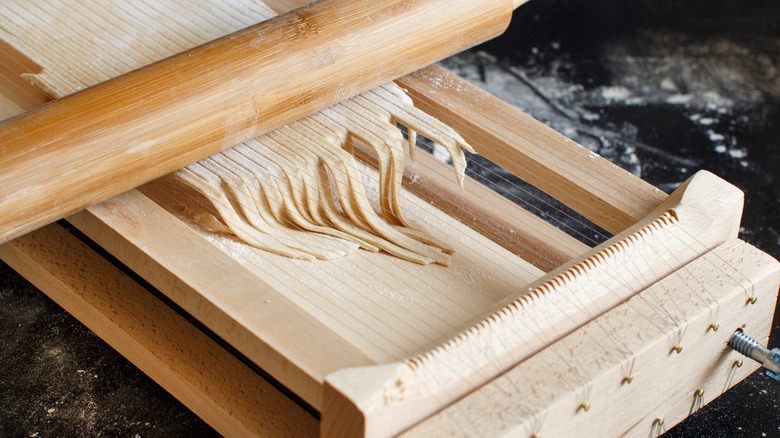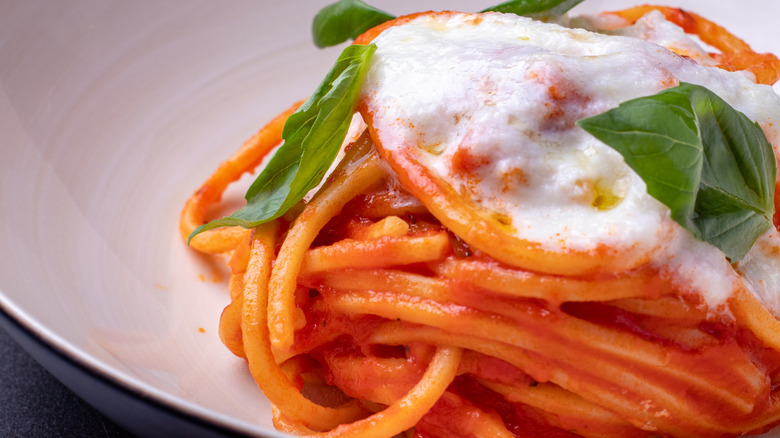What Is Chitarra Pasta, And How Is It Different From Spaghetti?
It's hard to keep up with all of the pasta pleasures making their way from Italy to worldwide kitchens. We know and love spaghetti, fettuccine, linguine, penne, vermicelli, cannelloni, and dozens more — but there's one that routinely escapes the mainstream pasta parade. It's known as chitarra, a charmingly handmade, hand-cut pasta from Italy's Abruzzo region. Its name translates as "guitar," a seemingly curious name for pasta, until you realize how the long, flat pasta strings come into being.
Chitarra-making is considered an art in Abruzzo, with skills passed down from one generation to the next. The defining apparatus is a rectangular wooden contraption strung with fine wires, resembling those on a musical instrument such as a guitar or harp. But the only music here comes from the rhythmic rolling motion of pressing draped sheets of pasta dough through the wires, and the gentle padding as it falls through the strings into glorious strands of fresh goodness. If any bits of dough stick to the strings, chefs might give them a little strum to loosen the remnants with a final twang.
Traditional chitarra boards slant at the bottom, allowing the newly made pasta to slide into waiting bowls or pans. Chitarra is sometimes referred to as "spaghetti chitarra" because of the similarity in how it's implemented in recipes. However, a big difference lies in the shape. While spaghetti is cylindrical, chitarra bears a chunkier square cut, a given due to the wider spacing of the dough-cutting strings.
Why choose chitarra over spaghetti
The romantic allure of making pasta in Italy is the stuff of culinary dreams. But let's be honest; We aren't routinely jumping on airplanes to do our weekly shopping. That pushes the reality of freshly crafted chitarra pasta into vacation territory. Other options do exist, though, namely purchasing dried versions of the cherished pasta through online venues, in specialty grocers, or, occasionally, from national supermarket chains. If you're lucky enough to have dedicated Italian markets in your area, it's quite possible to find a pasta chef making chitarra by hand.
There's a reason to go that extra mile to find chitarra pasta rather than the much more common spaghetti. Because of the square shape, chitarra strands have a flatter surface for cradling sauce, herbs, and other ingredients. The texture tends to be coarser as well, helping to hold things firmly in place from plate to fork to eagerly awaiting tastebuds.
To really ensure the perfect shape, texture, and freshness, consider purchasing a traditional wooden chitarra pasta cutter for your own kitchen. Available options often come directly from Italy, created from natural woods and stainless steel strings. For ultimate experimentation, look for a dual-sided chitarra maker with different wire spacing for thicker or thinner strings of pasta. As for which pasta dish to make, anything goes! Switch chitarra pasta into any spaghetti recipe, or try it in a linguine or fettuccine Alfredo dish.

